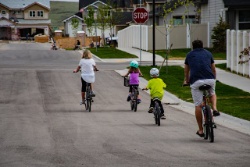Beware The Sleep Of Death
Easter Drivers Warned: Beware The Sleep Of Death
Media Release: Injury Prevention Network of Aotearoa New Zealand (IPNANZ)
Tuesday 3 April 2007
Driver fatigue caused by insufficient or poor quality sleep is possibly the biggest killer on our roads, warns the Injury Prevention Network of Aotearoa New Zealand (IPNANZ). It is encouraging motorists this Easter to get plenty of sleep before heading off on holiday, and to watch for fatigue warning signs as they drive.
IPNANZ National Manager Valerie Norton says falling asleep at the wheel can happen to drivers even while their eyes remain open.
"At 100km/h, zoning out for just three seconds, known as 'micro-sleeping' or the 'sleep of death' would see your car travelling 83 metres uncontrolled. That's almost the length of a rugby field.
"Drowsy driving crashes have high death rates because they happen at high speeds on open roads, and sleeping drivers cannot take evasive action.
"Warning signs include not being able to remember the last few kilometres, yawning repeatedly, humming in the ears and having trouble keeping your head up."
Sleep safety education campaigner Martin Jenkins, who lost his father to drowsy driving in 2003, says New Zealand is way behind the rest of the world in understanding the seriousness of drowsy driving.
He says its incidence is much more common than people realise, but that it often goes unreported, or speed is mistakenly attributed as the cause of crashes because there was no braking, deceleration or apparent attempts at avoidance.
"Internationally, driver fatigue is known to be as a big a killer as drunk driving. Statistics from New York indicate that drowsiness and inattention contribute to 80% of accidents. Across the Tasman in Victoria, drowsy driving can get you five years in jail. In New Zealand it's not even present as an option on the vehicle crash assessment forms our police use when attending incidents."
Jenkins says he doesn't mean to be critical of New Zealand Police.
"All New Zealanders need to be more aware of the dangers of drowsy driving. We may be great at telling our kids and mates not to drink and drive, but how many of us think about warning others not to drive when they're tired?"
IPNANZ encourages drivers to pull over somewhere safe and 'power-nap' for about 15 minutes as soon as they experience any drowsy driving warning signs.
"Will-power, strong coffee, opening the window, or turning on the radio are no match for drowsiness," says Valerie Norton.
"People can be so anxious to get from A to B that they keep driving even when very tired. It is far better to arrive a little later but safe and well, than to nod off at the wheel and be involved in a crash."
ENDS


 Sport Manawatū: Women’s Health Series Empowers Women To Prioritise Their Wellbeing
Sport Manawatū: Women’s Health Series Empowers Women To Prioritise Their Wellbeing Pure Adventure Charitable Trust: Iconic One New Zealand GODZONE To Make Triumphant Return To New Zealand’s Adventure Racing Scene
Pure Adventure Charitable Trust: Iconic One New Zealand GODZONE To Make Triumphant Return To New Zealand’s Adventure Racing Scene The Charter School Agency: New Charter Schools Open Doors To First Students
The Charter School Agency: New Charter Schools Open Doors To First Students  The Wednesday Challenge: Tauranga Travel Initiative Goes National
The Wednesday Challenge: Tauranga Travel Initiative Goes National Love Grace Handbag Appeal: How Kiwis United to Collect 5,269 Handbags in Grace Millane's Memory
Love Grace Handbag Appeal: How Kiwis United to Collect 5,269 Handbags in Grace Millane's Memory Sharon McLennan, The Conversation: Fiji’s HIV crisis is a regional challenge that demands a regional response
Sharon McLennan, The Conversation: Fiji’s HIV crisis is a regional challenge that demands a regional response